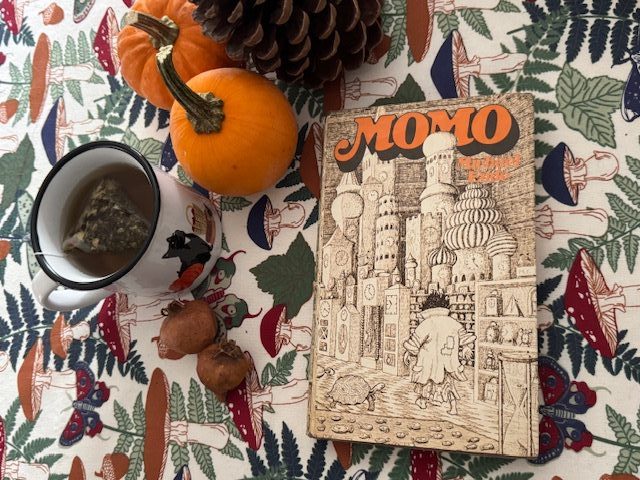Frankfurt, Germany’s financial capital and home to the European Central Bank, lives around the River Main — hence its full name, Frankfurt am Main.
In the modern and photogenic Willy-Brandt-Platz stands the great symbol of the euro: large, bright, and surrounded by glass skyscrapers that catch the morning light.
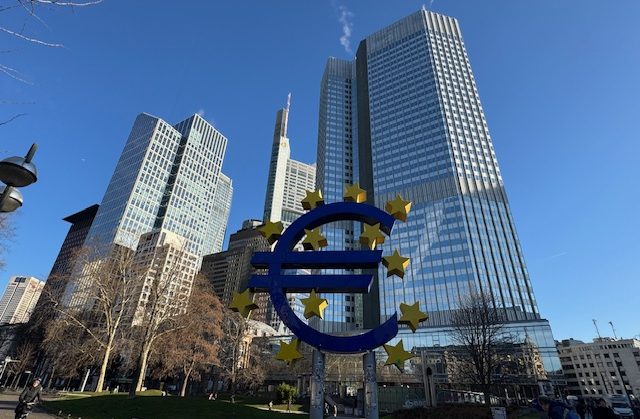
A walk along the River Main on a day as clear and luminous as this one is well worth it. It’s still early, and the city hasn’t quite woken up yet.
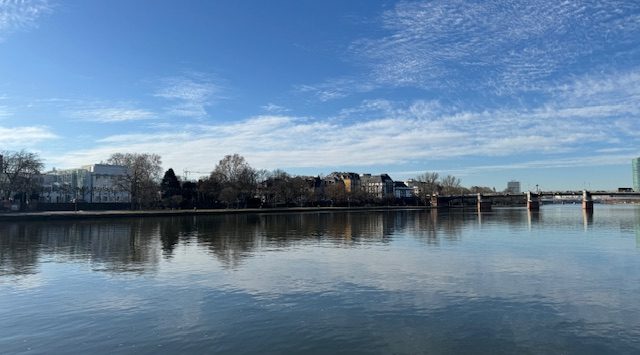
The iconic Römerberg, with its collection of timber-framed buildings that look straight out of a Christmas scene, is my favorite place in the city. The light, the blue sky, and the pastel façades create a perfect postcard.
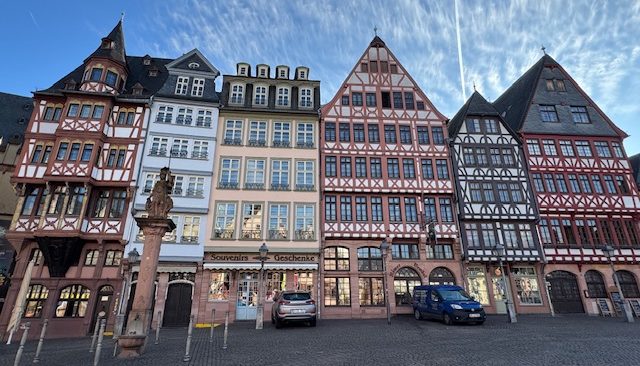
In the nearby streets I find lovely houses with steep roofs, that quintessentially German architecture that feels as if it’s come out of a fairy tale.
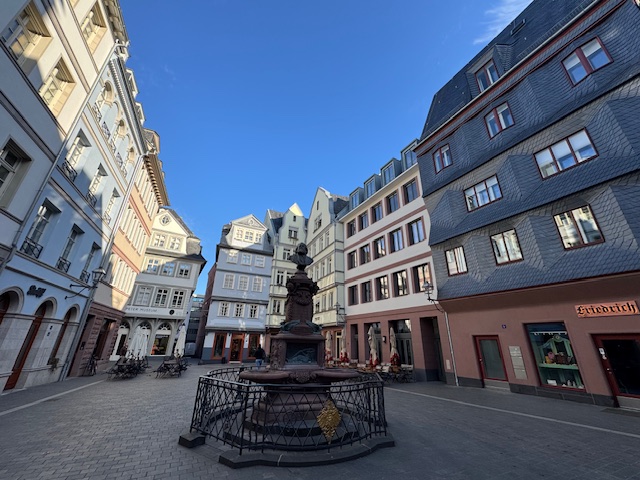
The Caricature Museum stands opposite the cathedral. The city was heavily bombed on March 18 and 22, 1944, and much of the historic center was destroyed.
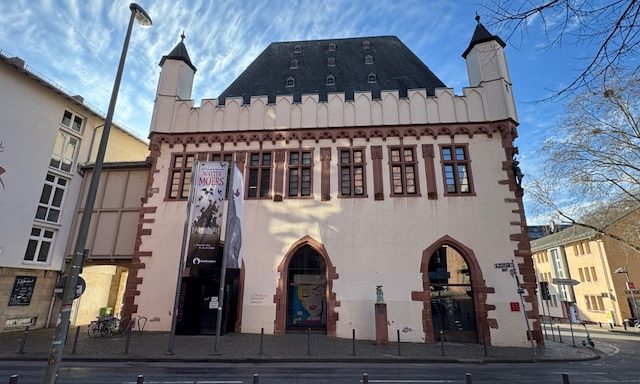
The Cathedral of St. Bartholomew partially withstood the devastation. Although it suffered fires and serious damage —its roof collapsed and much of the interior was reduced to rubble— its main tower remained standing, becoming a symbol of Frankfurt’s resilience. They say that, amid the smoke and ruins, its silhouette was still visible — a quiet reminder of a city refusing to disappear.
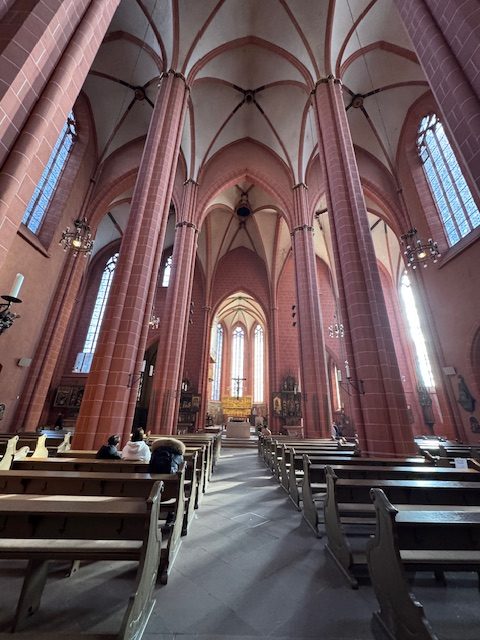
After the war, local residents took part in its reconstruction, stone by stone, as an act of hope and remembrance. Today, when you step inside, you can still feel that mix of solemnity and resilience that lingers in places that have survived fire.
I step briefly into the Oxfam bookshop, always a good place to get lost among books with stories of their own.
In the Altstadt, I visit the Kleinmarkthalle, a feast of fruits, vegetables, breads, and local aromas.
Another stop on my morning walk is the Goethe House, birthplace of the city’s most famous writer, born on August 28, 1749. I start the visit in the kitchen, filled with gadgets from another era. In the library, about two thousand books rest before a magnificent desk. In the painting gallery hang the family’s collection of artworks. I peak the poet’s bedroom and I pause before a cabinet filled with delicate teacups.
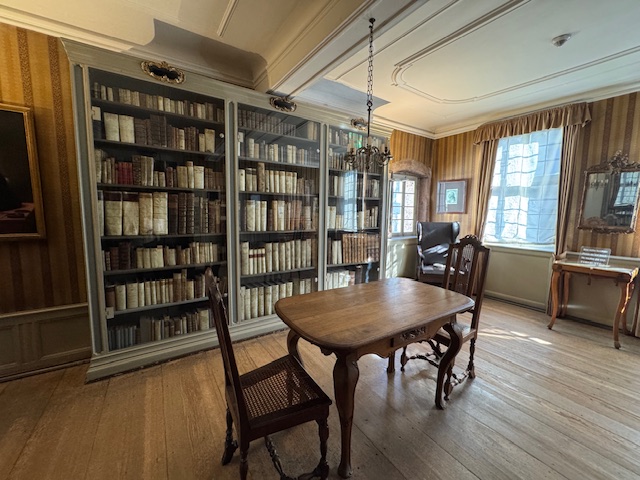
Cornelia’s room, his sister’s, is decorated with warm bluish wallpaper; a small desk by the window seems to invite you to write. The gray salon, or music room, completes the visit with quiet elegance.
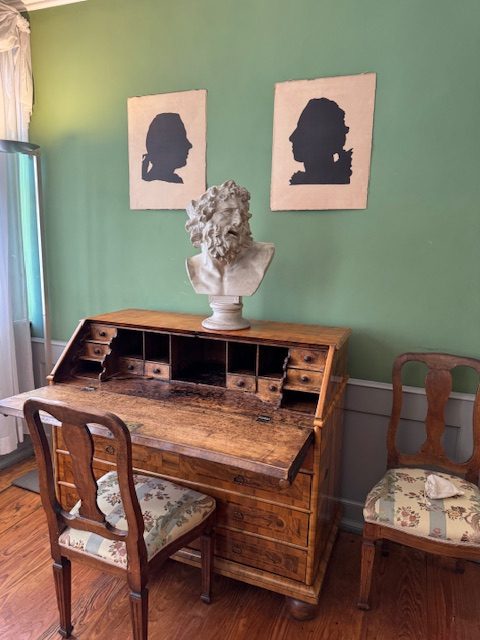
Across from the Goethe Museum, I find Picknick, a vegan restaurant with a wall covered in teapots and delicious crêpes. I have breakfast surrounded by Turkish touches and a cozy atmosphere.
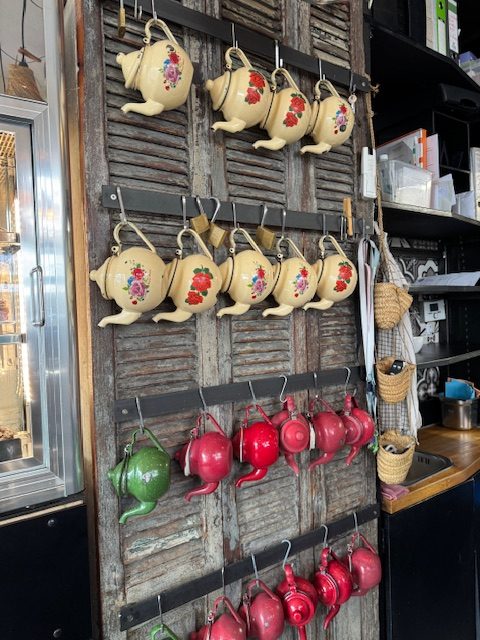
Back in the center, I come across Motel a Miño, a shop full of beautiful mugs — it’s hard to resist taking one home.
The walk continues through the park and the Westend district, where the museums line the riverside promenade. One of them, with a dinosaur at the entrance, makes me smile before I return to the calm rhythm of the river.
Literaty Note
In one of my Sunday newsletters, in the section Between the Lines, I shared a thought about German writers — those I’ve read and those still waiting on my list.
Today, I want to mention one of the most important books of my childhood: Momo, by German author Michael Ende.
Momo and her story stole my heart — a girl who, through the power of listening and kindness, stands up to the theft of time. A book full of values, imagination, and a luminous way of seeing what truly matters.
Perhaps that’s why, as I walk through Frankfurt under this sunny sky, I think that traveling —like reading— is also a way of taking care of our time.
